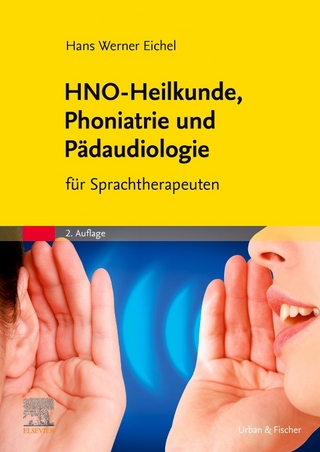
Human Communication Disorders
Pearson (Verlag)
978-0-205-27002-6 (ISBN)
- Titel ist leider vergriffen;
keine Neuauflage - Artikel merken
I.INTRODUCTION. 1.The Professions of Speech-Language Pathology and Audiology, by Fred Spahr and Russ Malone. Are Audiology and Speech-Language Pathology Professions? What Do Audiologists Do? What Do Speech-Language Pathologists Do? The Speech, Language, and Hearing Scientists. Career and Job Opportunities. Attributes and Requirements. Credentialing. Associations. Rewards. II.BASES OF HUMAN COMMUNICATION. 2.Development of Communication, Language, and Speech, by Robert B. Owens, Jr. Communication. Language. Speech. 3.Anatomy and Physiology of Speech, by Willard R. Zemlin. Respiration. The Larynx and Phonation. Articulation. The Nervous System and Speech Production. III.DIFFERENCES AND DISORDERS OF LANGUAGE. 4.Communication Differences and Disorders, by Kay T. Payne and Orlando L. Taylor. Basic Concepts Related to Culture and Language. Dialects of American English. Language Differences and Communication Disorders. 5.Communication Disorders in Infants Toddlers, and Preschool Children, by Amy M. Wetherby. Nature of Language Disorders in Young Children. Service Delivery Models for Infants, Toddlers, and Preschool Children. Assessment Issues and Strategies. Intervention Approaches and Strategies. 6.Language Disabilities in School-Age Children and Youth, by Elisabeth H. Wiig and Wayne A. Secord. Definitions. Prevalence. Underlying Mechanisms. Characteristics of School-Age Language Disabilities. Deficits and Morphology and Syntax. Intervention Perspectives. IV.DISORDERS OF ARTICULATION, VOICE, AND FLUENCY. 7.Phonological Disorders, by Richard O. Schwartz. The Nature of Phonological Disorders. Determinants of Phonological Disorders. Assessment. The Process of Assessment. Intervention. 8.Voice Disorders, by Douglas M. Hicks. Voice Problems Among Communication Disorders. Phonation and the Larynx. Parallel Perceptual and Physical Factors. Resonance. Factors That Influence Vocal Fold Vibration and Voice. Localized Lesions and Other Disorders. Voice Disorders Related to Resonance Deviations. Assessment and Diagnosis. Therapy for Voice Disorders. Speech Without a Larynx. 9.The Fluency Disorder of Stuttering, by Peter R. Ramig and George H. Shames. Definition. Theories of Causation. Normal Disfluency. The Development of Stuttering. The Assessment Process. Therapy for Stuttering. Prevention. Some Final Thoughts by a Prodigy of Stuttering. V.DISORDERS OF SPECIAL POPULATIONS. 10.Hearing and Hearing Disorders, by Frederick N. Martin and Bart E. Noble. The Nature of Sound. Disorders of Hearing. The Measurement of Hearing. Types of Hearing Loss. Implications of Hearing Loss. Remediation. 11.Cleft Palate, by Betty Jane McWilliams and Mary Anne Witzel. Examples. Prevalence. Underlying Mechanisms. Diagnosis. Treatment Approaches. Interdisciplinary Care. 12.Neurogenic Disorders of Speech, by Leonard L. LaPointe and Richard C. Katz. Classifications and Definitions. Basic Concepts. Components of the Motor Speech System. Causes of Neurogenic Speech Disorders. Characteristics and Types. Assessment. Treatment. Specific Treatment Goals. Counseling. 13.Aphasia and Related Adult Disorders, by Carol S. Swindell, Audrey L. Holland, and O. M. Reinmuth. Aphasia and the Brain. Syndromes of Aphasia. Mechanisms of Aphasia. The Person with Aphasia. The Natural Recovery Process in Aphasia. The Assisted Recovery Process in Aphasia. Related Disorders. 14.Alternative and Augmentative Communication, by Kathleen A. Kangas and Lyle L. Lloyd. Functions of AAC. Categories of AAC. AAC Model. Reasons for AAC Success. Communicative Competence. Potential Users of AAC. Assessment. Intervention. Funding, Rights and User Perspectives. Professional and Support Organizations. 15.Cerebral Palsy, by James C. Hardy. Terminology. Incidence. Etiology. Types of Acquired Neuromotor Disorders in Cerebral Palsy. Abnormal Reflex Behaviors. Communication Disorders. Other Bases of Communication Disorders. The Necessity of an Interdisciplinary Approach. Systems for Improvement of Neuromotor Function. Remediation of Communication Problems. The Era of Assistive Technology. Appendix A. Scope of Practice in Speech Language Pathology. Appendix B Scope of Practice in Audiology. Appendix C Standard for Professional Service Programs in Audiology and Speech-Language Pathology. Appendix D Reference List: Position Statements, Guidelines, and Other Relevant Papers. Appendix E Code of Ethics-Last Revised January 1, 1994. Glossary. References. Author Index. Subject Index. About the Authors. Past Contributors.
| Erscheint lt. Verlag | 5.4.1998 |
|---|---|
| Sprache | englisch |
| Gewicht | 1232 g |
| Themenwelt | Medizin / Pharmazie ► Gesundheitsfachberufe ► Logopädie |
| ISBN-10 | 0-205-27002-6 / 0205270026 |
| ISBN-13 | 978-0-205-27002-6 / 9780205270026 |
| Zustand | Neuware |
| Haben Sie eine Frage zum Produkt? |
aus dem Bereich


